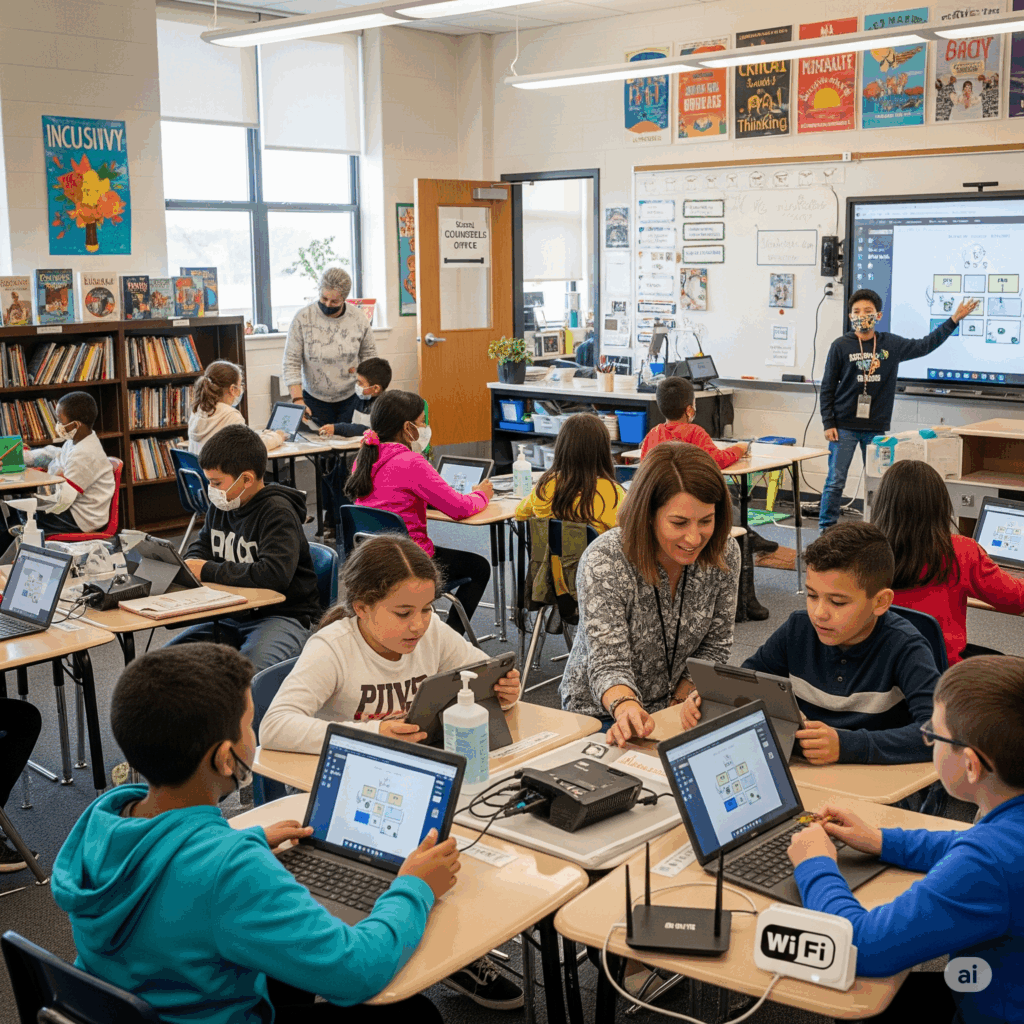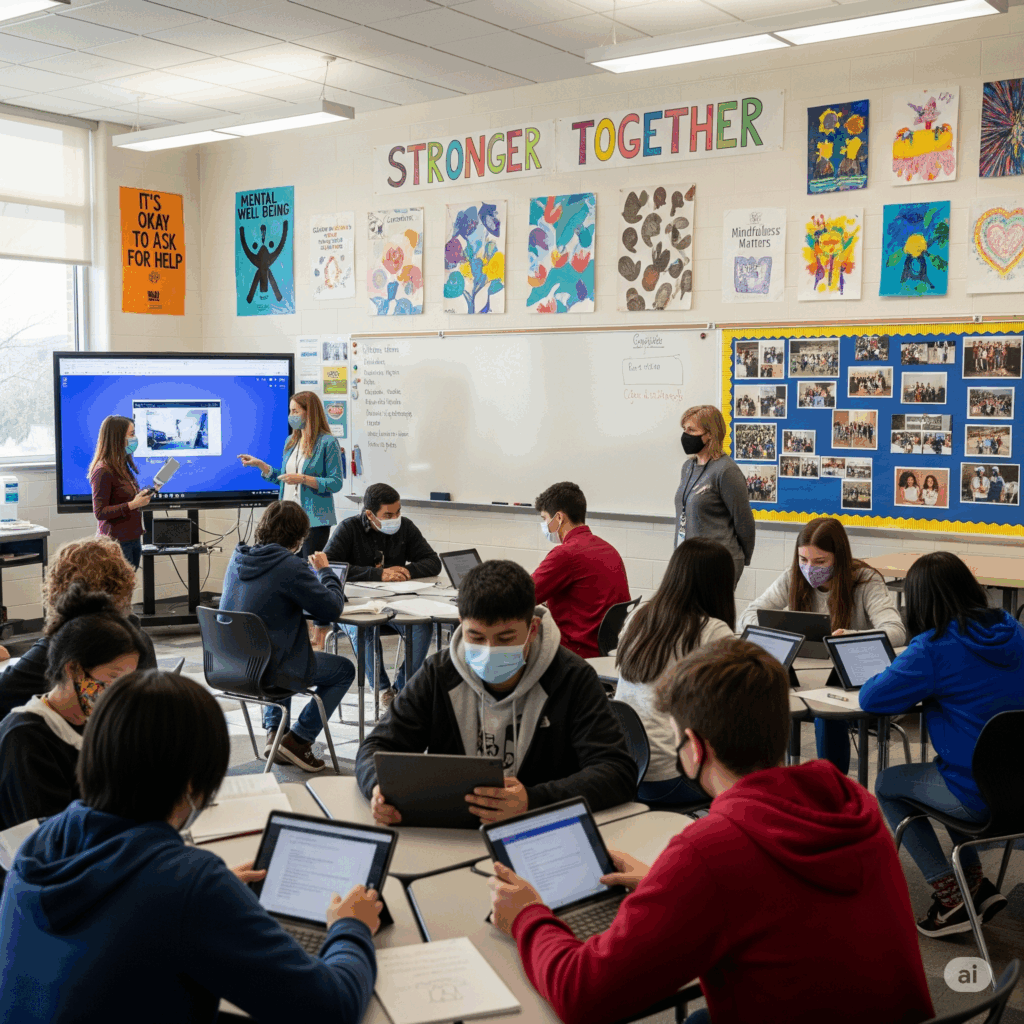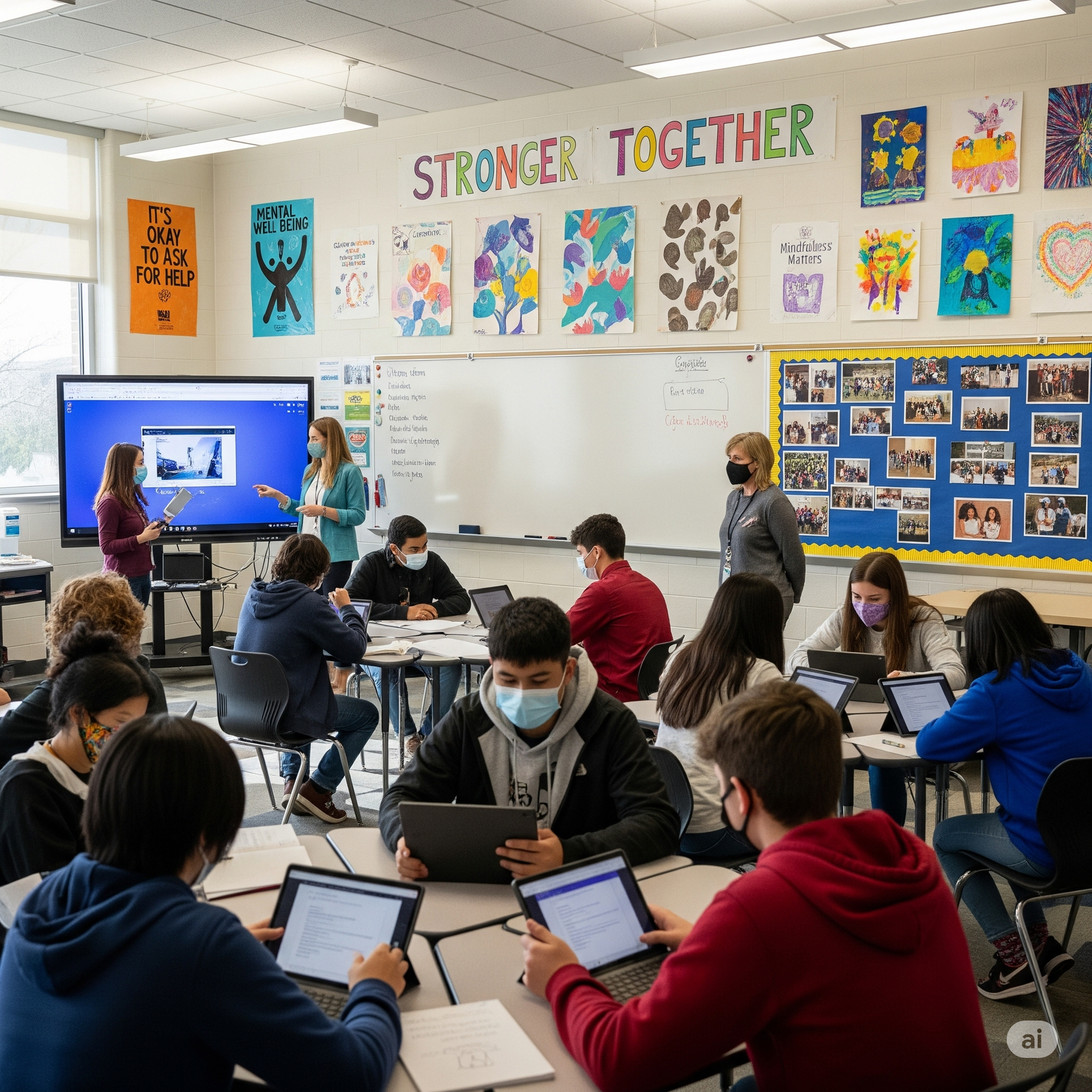The COVID-19 pandemic, a seismic event that disrupted nearly every facet of life, did not merely interrupt the US education system; it laid bare and profoundly exacerbated its pre-existing inequities. For decades, disparities in funding, resources, and educational outcomes have characterized American schooling, disproportionately affecting low-income students, students of color, those with disabilities, and learners in rural communities. The abrupt shift to remote learning, the uneven distribution of support, and the lingering social and emotional tolls of the pandemic have widened these gaps into chasms, presenting an urgent moral and societal imperative to forge a more equitable and accessible educational future.
Even before the pandemic, the landscape of US education was far from level. School funding models, often tied to local property taxes, meant that districts in affluent areas typically boasted superior facilities, experienced teachers, and a wealth of extracurricular and advanced academic opportunities. Conversely, schools in high-poverty zones frequently contended with crumbling infrastructure, higher teacher turnover, and fewer resources, leading to persistent achievement gaps. National assessments, such as the NAEP scores, consistently reflected these disparities, revealing significant performance differences across racial, ethnic, and socioeconomic lines. The pandemic, however, took this systemic imbalance and amplified it, creating new layers of disadvantage for the most vulnerable.

The Pandemic as an Accelerator of Disparity
The sudden pivot to remote learning in March 2020 served as a brutal revealer of the “digital divide.” Millions of students, particularly those from low-income households and rural areas, lacked the fundamental tools for online education: reliable internet access and dedicated devices like laptops or tablets. While some well-resourced districts swiftly distributed technology and ensured connectivity, others struggled, leaving countless students unable to connect to virtual classrooms, access assignments, or engage with their teachers. Even for those with devices, the home learning environment often presented insurmountable challenges – overcrowded living spaces, lack of quiet study areas, or parents juggling multiple jobs and unable to provide supervision or technical support. This digital chasm effectively shut out a significant portion of the student population from any meaningful learning for extended periods.
This inequitable access to instruction directly translated into exacerbated learning loss. While all students experienced some degree of academic disruption, the impact was profoundly uneven. Data from organizations like NWEA and studies cited by the Brookings Institution revealed significant setbacks in core subjects like reading and mathematics, with students in under-resourced schools experiencing greater learning deficits. For instance, early elementary students were particularly affected in acquiring foundational literacy and numeracy skills, a critical period for cognitive development. The National Center for Education Statistics (NCES) reported in 2022 that average scores for 9-year-olds declined by 5 points in reading and 7 points in mathematics compared to 2020, marking the largest average score decline in reading since 1990 and the first-ever in mathematics. Crucially, scores for lower-performing students declined more significantly than for their higher-performing peers, and the White-Black score gap in mathematics widened from 25 points in 2020 to 33 points in 2022. This disproportionate learning loss risks creating a “lost generation” if not urgently addressed, widening long-term educational and economic inequalities.
Beyond academics, the pandemic ignited a profound mental health crisis among US students. Isolation from peers and school communities, anxiety about the virus, grief over lost loved ones, and disruptions to routine created an unprecedented psychological toll. Reports from the CDC indicated that over 37% of high school students experienced poor mental health during the pandemic, with 44% persistently feeling sad or hopeless. This crisis was particularly acute in marginalized communities, which often faced higher rates of illness, economic instability, and trauma. Schools, traditionally a crucial source of support services, found themselves overwhelmed. High-poverty areas, already contending with fewer counselors, social workers, and psychologists, were ill-equipped to handle the surge in mental health needs, further compounding the challenges students faced in engaging with learning.
Finally, the pandemic intensified pre-existing teacher shortages and burnout. Educators, thrust into an entirely new teaching paradigm with inadequate resources and facing immense personal and professional stress, experienced unprecedented levels of burnout. This led to a wave of retirements and resignations, disproportionately impacting high-ppoverty schools that historically struggle to attract and retain experienced teachers. The result was a greater reliance on novice teachers, long-term substitutes, or even canceled courses, directly impacting the quality of instruction and further disadvantaging students who needed the most support. The Learning Policy Institute highlighted in a 2022 report that schools with more students of color and students from low-income families were disproportionately affected by these shortages, perpetuating cycles of inequity.

Pathways to Equity: Comprehensive Solutions
Addressing these widening gaps demands a multi-pronged, systemic, and sustained commitment that transcends political divides. It requires recognizing that educational equity is not just an ideal but a fundamental right and an economic imperative for the nation’s future.
A. Equitable Funding Models: At the heart of many disparities lies uneven school funding. States must move away from models heavily reliant on local property taxes towards formulas that prioritize student need, allocating more resources to districts serving higher concentrations of low-income students, English language learners, and students with disabilities. Federal investment, particularly through programs like Title I, remains critical to supplement state efforts. While pandemic-era funds like the Elementary and Secondary School Emergency Relief (ESSER) Fund provided crucial temporary relief, the challenge lies in ensuring sustained and increased federal and state funding beyond these emergency allocations. This strategic allocation of resources must be tied to evidence-based practices that demonstrate effectiveness in closing gaps.
B. Targeted Academic Interventions: To counteract learning loss, schools must implement targeted, high-impact academic interventions. High-dosage tutoring – individualized or small-group instruction delivered consistently by trained tutors – has consistently proven effective in accelerating learning, particularly in foundational subjects like reading and math. Such programs require significant investment in recruitment, training, and equitable access to ensure they reach the students who need them most. Extended learning time through high-quality summer school programs, after-school initiatives, and even extended school years can provide additional instructional hours, but these must be engaging and well-resourced, not simply more of the same. Furthermore, schools need robust diagnostic tools to accurately assess specific learning gaps and align curricula to directly address these deficits.
C. Holistic Student Support: Beyond Academics: Learning is not solely an academic endeavor; it is profoundly influenced by a student’s overall well-being. Schools must evolve into comprehensive community hubs that offer integrated mental health services. This means increasing the number of school-based counselors, psychologists, and social workers, and forging stronger partnerships with community mental health providers to ensure students have access to the support they need. The community schools model offers a promising blueprint, transforming schools into neighborhood centers that provide wraparound services like health clinics, dental care, food banks, and adult education. By addressing non-academic barriers such as hunger, health issues, and family instability, community schools create environments where students are better positioned to learn. Ensuring consistent access to nutritious meals and addressing other basic needs remains paramount.
D. Reimagining the Education Workforce: Addressing teacher shortages and burnout is paramount to achieving equity. Strategies include offering competitive salaries and benefits to attract and retain talented educators, especially in high-need subject areas and underserved communities. Improving working conditions through manageable class sizes, adequate planning time, and robust administrative support can reduce stress and increase job satisfaction. Investing in diverse teacher pipelines and robust mentorship programs for new teachers can ensure a steady supply of qualified educators who reflect the diversity of the student population. Furthermore, ongoing, high-quality professional development for all teachers in areas such as trauma-informed instruction, social-emotional learning, and culturally responsive pedagogy is essential to meet the evolving needs of students.
E. Bridging the Digital Divide (Sustained Effort): While temporary measures were taken during the pandemic, the digital divide remains a significant barrier. A sustained national commitment is needed to ensure universal broadband access that is affordable and reliable for every household, regardless of location or income. Programs that provide devices to students who lack them must continue, and schools need to invest in infrastructure that supports equitable digital learning. Crucially, digital literacy training for students, parents, and educators is necessary to ensure effective and safe technology integration into learning.

Challenges and the Path Forward
The path to educational equity is fraught with challenges. A primary concern is the sustainability of funding. The substantial federal aid provided during the pandemic, while critical, was largely temporary. As these funds expire, there is a real risk that vital programs and supports will be cut, reversing any progress made. Sustained political will and bipartisan collaboration are essential to ensure long-term, adequate investment in public education. This requires federal, state, and local governments, alongside communities and families, to recognize education as a collective responsibility and a cornerstone of democratic society.
Moreover, effective interventions demand data-driven decision-making. Schools and districts must continuously collect and analyze disaggregated data to pinpoint specific learning gaps, identify disparities, and assess the effectiveness of interventions. This iterative process of assessment, adjustment, and accountability is crucial for ensuring resources are deployed efficiently and equitably.
Ultimately, addressing the widening gaps in the US education system is not merely about recovering from the pandemic; it is about seizing an unprecedented opportunity to fundamentally transform schooling. The crisis laid bare the fragility and inequities of the existing system, but it also illuminated the resilience of educators, students, and families, and the potential for innovative solutions.
Conclusion
The COVID-19 pandemic served as an undeniable stress test for the American education system, exposing and exacerbating deeply entrenched inequities in access, resources, and outcomes. The widening gaps in learning, mental health, and teacher capacity demand urgent, comprehensive, and sustained action. By committing to equitable funding, implementing targeted academic and holistic student supports, reimagining the education workforce, and definitively bridging the digital divide, the United States can move beyond mere recovery. It is a collective imperative to build a more just, resilient, and inclusive education system – one that truly serves every child, equipping them with the knowledge, skills, and well-being necessary to thrive in an ever-changing world and fulfill the promise of a more equitable society.










